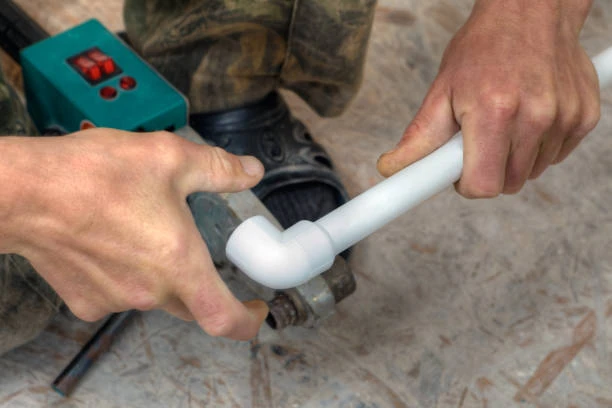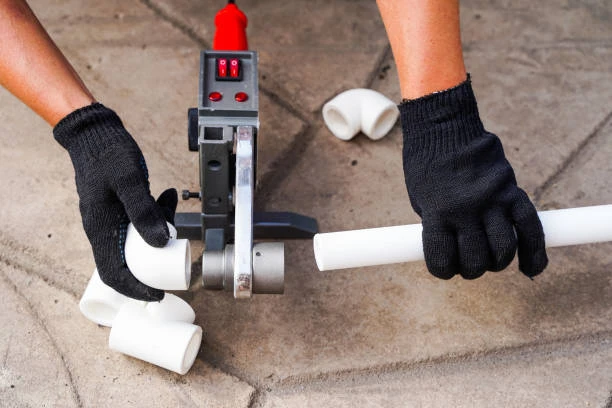Enhancing the Future of Polypropylene Pipe Applications
In a significant development for the industrial sector, a new Industrial Technical Committee has been formed to support and promote the use of polypropylene pipe. This initiative aims to address the growing demand for high-performance piping solutions in various applications, including water distribution, drainage, and industrial processes. This article will explore the advantages of polypropylene pipe, the role of the new committee, and the potential impact on the industry.
Understanding Polypropylene Pipe
Polypropylene (PP) is a versatile thermoplastic polymer widely used in various applications, including packaging, textiles, and automotive parts. In the piping industry, polypropylene pipes offer several advantages over traditional materials such as PVC and metal:
1. Chemical Resistance
Polypropylene pipes exhibit excellent resistance to a wide range of chemicals, making them suitable for applications in chemical processing and industrial environments. This resistance reduces the risk of corrosion and degradation, ensuring longer service life.
2. Lightweight and Easy to Handle
One of the most significant benefits of polypropylene pipes is their lightweight nature. This makes them easier to transport, handle, and install, reducing labor costs and time during construction projects.
3. High Thermal Resistance
Polypropylene pipes can withstand high temperatures, making them ideal for hot water applications. Their thermal stability also allows them to maintain performance in extreme conditions.
4. Cost-Effectiveness
Polypropylene pipes often have lower initial costs compared to other materials. Additionally, their durability and low maintenance requirements contribute to long-term cost savings for users.
The Formation of the New Industrial Technical Committee
The establishment of the Industrial Technical Committee is a response to the growing recognition of polypropylene pipes in the market. The committee comprises experts from various sectors, including manufacturers, engineers, and industry representatives. Its primary objectives include:
1. Developing Standards and Guidelines
One of the committee’s key functions is to develop industry standards and guidelines for the use of polypropylene pipes. These standards will help ensure consistency in quality, safety, and performance across different applications, ultimately benefiting manufacturers and end-users alike.
2. Promoting Best Practices
The committee will focus on promoting best practices for the installation and maintenance of polypropylene pipes. This includes creating educational materials, training programs, and resources for industry professionals to enhance their understanding of polypropylene pipe systems.
3. Research and Innovation
To support the ongoing development of polypropylene pipes, the committee will encourage research and innovation within the industry. By fostering collaboration between academia and industry, the committee aims to identify new applications and improve existing technologies.
4. Addressing Market Challenges
The committee will also work to identify and address any challenges faced by the polypropylene pipe industry. This includes tackling issues related to supply chain management, market competition, and regulatory compliance.

The Benefits of Forming an Polypropylene Pipe Industrial Technical Committee
The formation of this committee offers several benefits to the polypropylene pipe industry:
1. Increased Credibility
Establishing a technical committee lends credibility to the use of polypropylene pipes. By developing standards and guidelines, the committee can enhance consumer confidence in these products, leading to increased adoption.
2. Enhanced Collaboration
The committee fosters collaboration among various stakeholders, including manufacturers, engineers, and regulatory bodies. This collaboration can lead to improved communication and knowledge sharing, ultimately benefiting the entire industry.
3. Innovation and Growth in Polypropylene Pipe
By promoting research and innovation, the committee can help drive growth in the polypropylene pipe sector. New developments can lead to enhanced products, better performance, and expanded applications, opening up new markets.
4. Advocacy for Polypropylene Pipe
The committee can serve as a unified voice for the polypropylene pipe industry, advocating for its benefits and promoting its use in various applications. This advocacy can help influence policy decisions and regulations that support the growth of polypropylene piping solutions.
Current Trends in Polypropylene Pipe Applications
The demand for polypropylene pipes is on the rise, driven by several trends in the market:
1. Water Management Solutions
With increasing concerns about water scarcity and quality, polypropylene pipes are gaining popularity for water management applications. Their resistance to corrosion and ability to handle high pressures make them suitable for various water distribution systems.
2. Polypropylene Pipe Industrial Applications
Industries such as chemicals, pharmaceuticals, and food processing are increasingly adopting polypropylene pipes due to their chemical resistance and hygiene standards. The ability to transport aggressive fluids safely has made them a preferred choice in these sectors.
3. Infrastructure Development
As infrastructure projects continue to grow worldwide, the demand for durable and efficient piping systems is rising. Polypropylene pipes are being used in construction projects for drainage, sewage, and plumbing systems, offering long-lasting solutions.
4. Environmental Sustainability
The shift towards sustainable practices is influencing the choice of materials in various industries. Polypropylene pipes are recyclable, and their lightweight nature contributes to lower carbon emissions during transportation and installation.
Challenges Facing the Polypropylene Pipe Industry
While the future looks promising for polypropylene pipes, several challenges need to be addressed:
1. Competition from Alternative Materials
The polypropylene pipe market faces competition from other materials such as PVC, HDPE, and metal. Companies must highlight the unique advantages of polypropylene to differentiate themselves.
2. Regulatory Hurdles
The plastic industry, including polypropylene, is subject to increasing regulatory scrutiny due to environmental concerns. Navigating these regulations can be complex, requiring companies to stay informed and compliant.
3. Polypropylene Pipe Market Education
Despite the benefits of polypropylene pipes, there is still a need for greater market education. Many industry professionals may be unfamiliar with the advantages and applications of polypropylene, necessitating outreach and training efforts.
Future Outlook for Polypropylene Pipe
The establishment of the Industrial Technical Committee, combined with current market trends, presents a positive outlook for the polypropylene pipe industry:
1. Increased Adoption
As awareness of the benefits of polypropylene pipes grows, their adoption in various applications is expected to increase. The committee’s efforts in promoting best practices and developing standards will further facilitate this trend.
2. Ongoing Innovation
Continued investment in research and development will likely yield new and improved polypropylene pipe products. Innovations in material science and manufacturing processes can enhance performance and expand applications.
3. Collaboration and Partnerships
The committee’s focus on collaboration will strengthen relationships within the industry, fostering partnerships that can lead to new opportunities and market growth.
4. Advocacy for Sustainability
As sustainability becomes a priority across industries, the committee can position polypropylene pipes as a responsible choice for environmentally conscious consumers. Promoting their recyclability and lower environmental impact will be crucial in driving demand.
Conclusion
The formation of the new Industrial Technical Committee represents a pivotal step in supporting the use of polypropylene pipes in various applications. By focusing on standardization, best practices, research, and advocacy, the committee aims to enhance the credibility and adoption of polypropylene pipes in the market. As the industry navigates challenges and embraces opportunities, polypropylene pipes are poised to play a vital role in the future of piping solutions.
FAQs
1. What are the advantages of using polypropylene pipes?
Polypropylene pipes offer excellent chemical resistance, lightweight handling, high thermal resistance, and cost-effectiveness.
2. What is the role of the Industrial Technical Committee?
The committee develops standards, promotes best practices, encourages research, and addresses challenges in the polypropylene pipe industry.
3. In which applications are polypropylene pipes commonly used?
They are used in water management, industrial processes, infrastructure development, and more, particularly where chemical resistance is required.
4. How does the committee plan to promote polypropylene pipes?
Through educational materials, training programs, and advocacy efforts, the committee aims to increase awareness and adoption of polypropylene pipes.
5. What challenges does the polypropylene pipe industry face?
Challenges include competition from alternative materials, regulatory hurdles, and the need for market education on the benefits of polypropylene pipes.

















